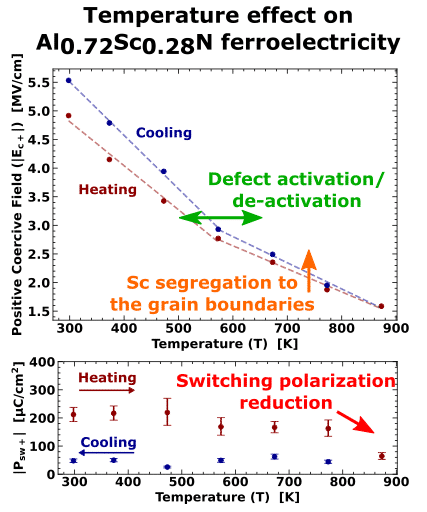
Thermal stability of the ferroelectric properties for various scandium content in 100 nm-thick aluminum scandium nitride films grown on different bottom electrodes
2Technical Faculty, Kiel University, Kiel, Germany
3Chair of Nanoelectronics, TU Dresden, Dresden, Germany
The discovery of ferroelectricity in aluminum scandium nitride (Al1-xScxN) opens new technological perspectives for harsh environments considering the high temperature stability of piezoelectricity in aluminum nitride. The ferroelectric and material properties of 100 nm-thick Al1-xScxN are studied up to 873 K for Sc contents between 14% and 28%. The proposed analysis combines temperature-dependent electrical and in-situ X-ray diffraction measurements, as well as atomic force and scanning electron microscopies. The stability of the ferroelectric properties is evaluated considering both metals and semiconductors as bottom electrode. High switching polarization and tunable coercive fields are achievable varying the temperature from room temperature up to 673 K. The rearrangement of the crystalline structure and consequent degradation of the ferroelectric properties above this temperature are observed. The rearrangement can be explained by Sc out-diffusion from the grains and consequent segregation to grain boundaries. Domain pinning caused by Sc segregation, degradation of the quality of the ferroelectric/bottom electrode interface and formation of Sc-deficient domains, which exhibit a coercive field larger than the breakdown field, can explain the degradation of the ferroelectric properties. A promising temperature stability above 673 K is achievable in epitaxial films. The Curie temperature of Al1-xScxN is confirmed to be above 873 K for all Sc contents analyzed in this study, thus corroborating the promising thermal stability of this ferroelectric material and supporting its future adoption in memory technologies for harsh environments.

Powered by Eventact EMS
